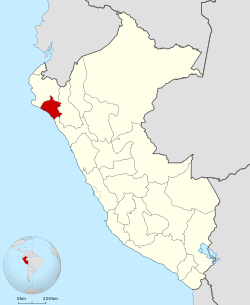In the Andes Mountains in Peru, a major archeology site has recently discovered evidence of the practice of human sacrifice. Chotuna-Chornancap, found in the northern area of Lambayeque is one of the largest archaeology dig sites in Peru. The burial site, founded in the Middle Sican period (900-1100 A.D.) and uncovered in 2010 is characterized by pyramid-like mounds constructed of mortar and bricks made of adobe for the upper-class citizens, while common folk were buried in simple graves surrounding the mounds. The burials surround the ruins of an ancient temple that served the Chimu-Incas during the 11th and 12th centuries. It took more than fifty men an eight-month period to remove the sand covering the temple using small tools and wheelbarrows. The site must be constantly maintained because of the harsh winds that continually blow across the area.

At least 50 of the common graves indicate human sacrifice was practiced for many generations, mostly to Naylamp, the semi-mythical creator of Sican society. The followers of Naylamp believed that he came to the shores of Peru on a balsa raft from the sea, and when he died he sprouted wings and flew away to another land. Archaeologist Izumi Shimada named this civilization Sican which means “temple of the moon”.
The graves encircle a primary grave, believed to be that of a high-priestess, in which several clay vessels and a gold cup depicting the head of a cocoa leaf chewer (coquero) were found. Another sculpture of a standing male with a smile on his face was also unearthed. Of the common graves excavated, six revealed the remains of children buried together in pairs. Two of these skeletons show that the feet of the children had been removed in ceremonial sacrifice rituals, possibly to allow then to become guardians for those buried in nearby graves. The remaining graves were of adults who were mutilated by decapitation, throat slitting and the opening of the chest to enable heart removal. While the adults were healthy at the time of sacrifice, the skeletons exhibited signs of possible illness or trauma as children.
Haagen Klaus, a bio archaeologist at George Mason University in Fairfax, Virginia, and author of the paper: Human Sacrifice Victims at Chotuna-Chornancap: Multidimensional Reconstruction of Ritual Violence in the Late Pre-Hispanic Lambayeque Valley Chotuna-Chornancap remarked, “It’s not unusual that sacrifices are made … sometimes during the funeral or even years or generations afterward. But we can see that a number of the individuals that were buried were children – and that does fit into the larger pattern of ritual sacrifice.”
Archaeologist Carlos Wester La Torre of a Culture Ministry unit at the dig site said, “The archaeological excavations in this season have begun to yield results that allow an understanding of the function of places such as Chornancap, which since the discovery of the priestess’ grave has continued to reveal the complex array of ceremonies and rites that occurred at the temple.”
Carlos Wester La Torre, director of Brüning Museum in Lambayeque, Peru stated, “The existence of pedestals in the shape of chakanas (Andean Crosses) and painted murals in which we can appreciate sacred rituals, as well as the well-known anthropomorphic waves, are proof that this site was used by important people, perhaps the founder of the Lambayeque civilization, Naylamp and his eldest son Cium and other descendants”.

A museum is located near the site, but is rarely visited and is kept locked unless a visit has been scheduled. Artifacts such as sacrificial knives, remains of several victims, pottery and murals from the temple of Naylamp are on display. There is also a notable amount of written material available to the public. Unfortunately, the dig site and the 820 square foot temple are off limits to the public at this time.
